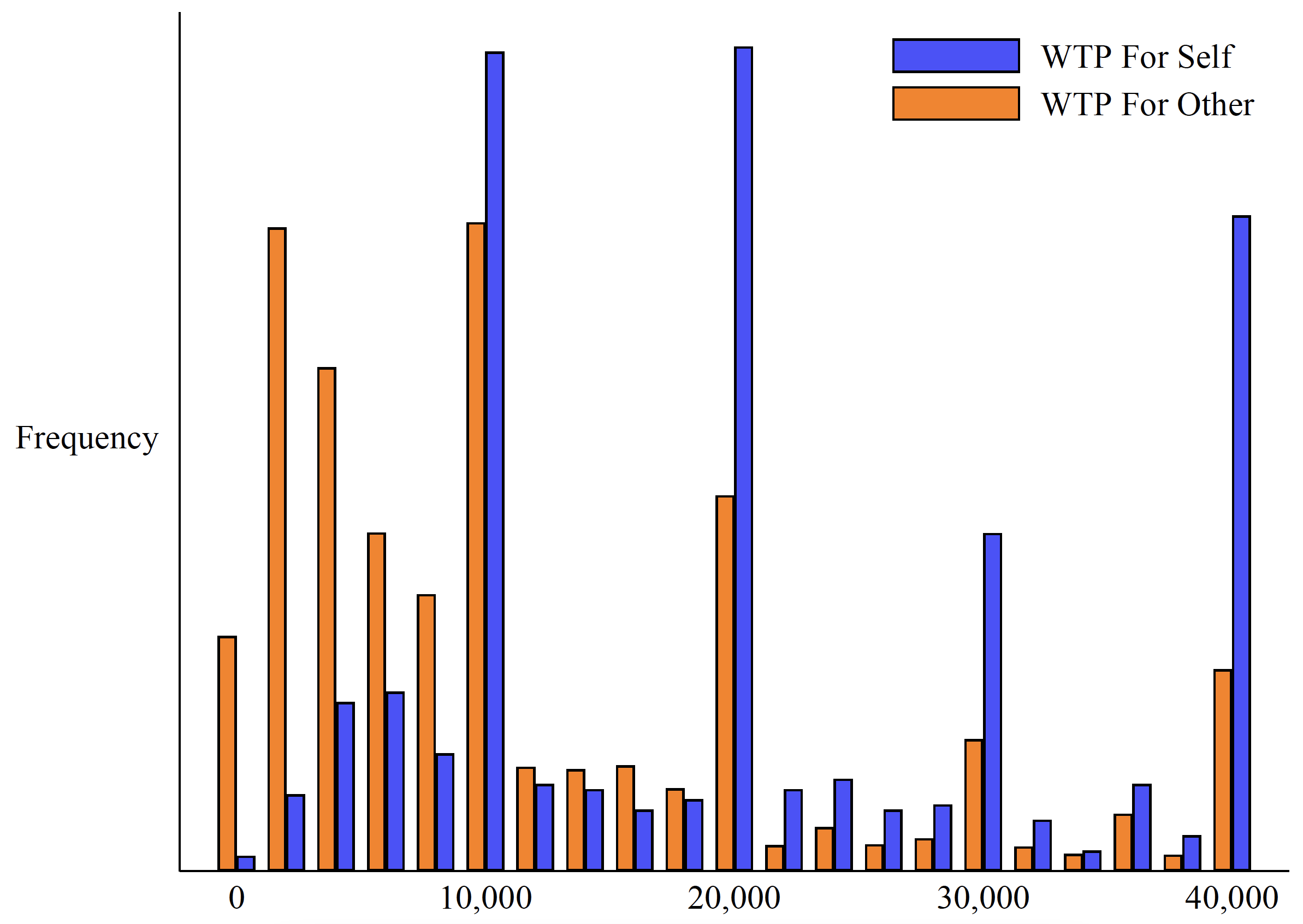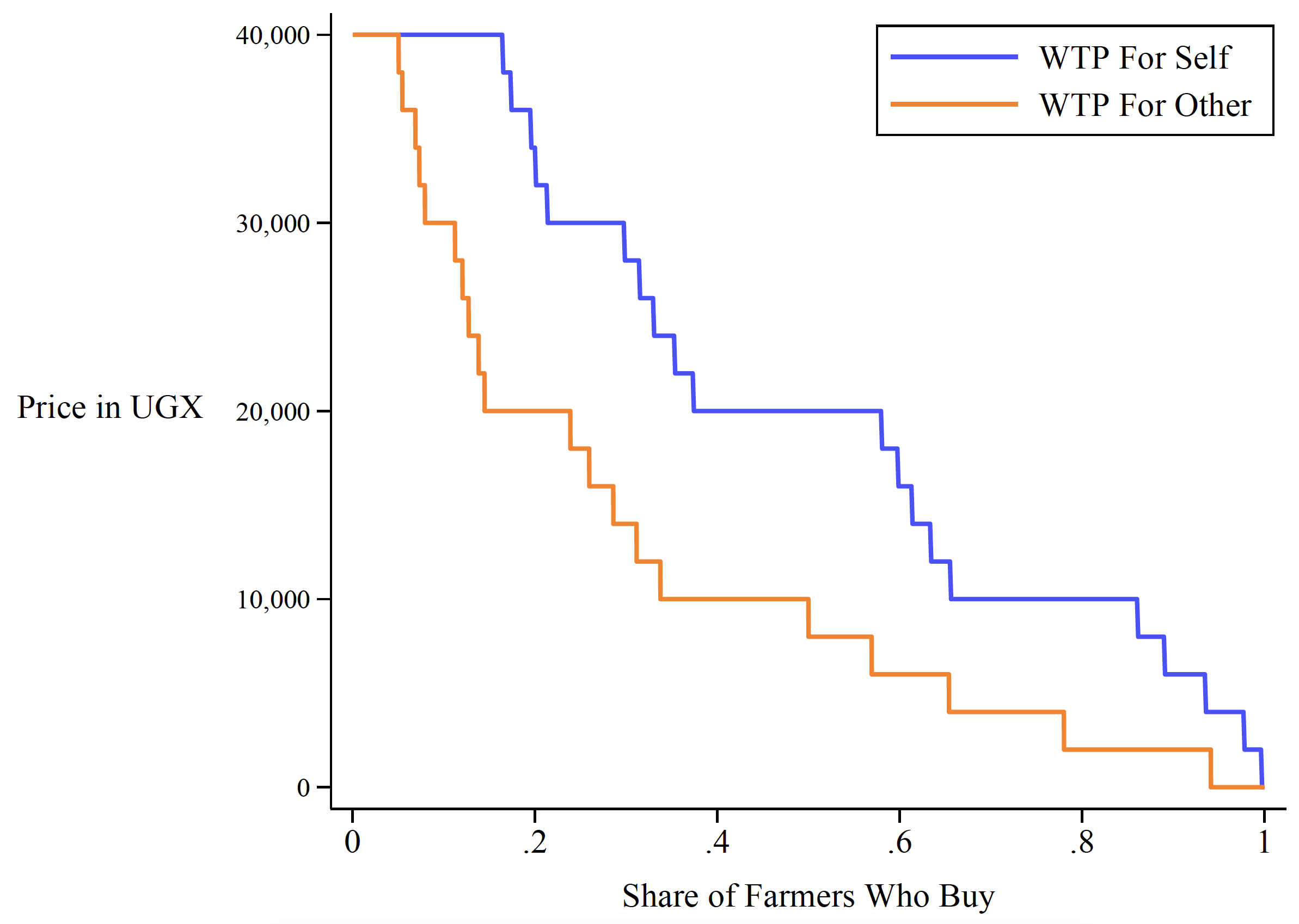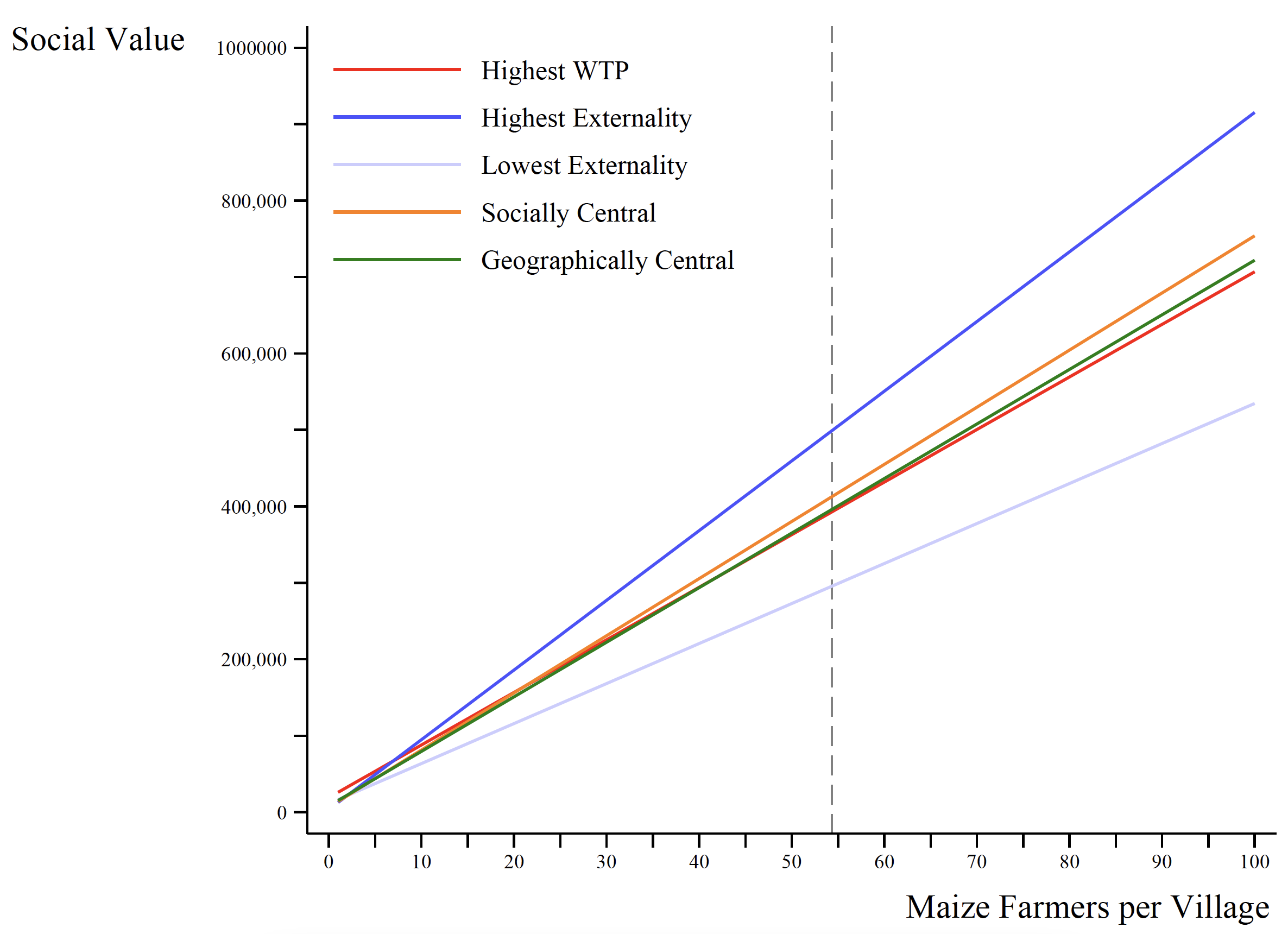
Farmers are willing to pay to induce other farmers to adopt new technologies, and can help identify who among them should adopt first
When a firm decides to use new technology, it makes an individual decision with consequences for others in society. Technology can affect others positively or negatively, generating benefits or costs for a society not reflected in market prices, called externalities (Pigou 1920). It is a government’s responsibility to decide on corrective policies, either to curb negative externalities or to foster positive ones, using tools like taxes or subsidies. Ideally, if the externalities are large, a government intervenes by choosing a policy that maximises social benefit. In reality, large social gains often go unrealised because externalities are not accounted for.
Quantifying externalities: Identifying the size of the problem
Expressing externalities as monetary amounts can help a government quantify the size of the problem. This is not straightforward, however, because externalities are not traded – they lack a price tag. Contingent valuations (Diamond and Hausman 1994) are a common way to measure the value of non-marketed goods like externalities: they elicit an individual’s hypothetical willingness to pay (WTP) for a good. Unfortunately, given their speculative nature, contingent valuations tend to yield biased answers from respondents (Hausman 2012).
In my paper (Lerva 2022), I show how we can measure externalities using truthful WTP elicitations. I use a variant of the Becker-deGroot-Marschak (BDM) mechanism1 (Becker et al. 1964, Berry et al. 2020, Burchardi et al. 2021) to elicit how much farmers are willing to pay to train one specific farmer in their village on pest-control techniques. This enables me to measure the monetary value of the externalities produced by a farmer adopting a new technology, from the standpoint of their peers (assuming that farmers are self-interested).
Methodology: Eliciting willingness-to-pay for self and other farmers in the village
I sampled about eight farmers per village in 103 villages in Eastern Uganda. They were offered the opportunity to purchase an in-depth, agronomist-led, one-on-one training on techniques to address a new maize pest known as the fall armyworm (Spodoptera frugiperda), either for themselves or for a specific farmer in their village.
Farmers stated their WTP for themselves and for every other farmer in the village sample, knowing that one of them could be randomly selected as decision maker and that one of the decision maker’s valuations would be randomly chosen for implementation. If their selected valuation was at least as large as a randomly drawn price, the decision maker paid this price to train the farmer for whom the valuation was done. For example, farmer A stated she is willing to pay $5 to train farmer B, A is selected as decision maker and her valuation for B is selected. If the randomly drawn price was $3, A paid $3 and B received training. However, if the randomly drawn price was $6, and no farmer had expressed a WTP higher than $5, no farmer in the village received training.
I find farmers anticipate large externalities from others receiving the training – on average, they are willing to pay two days’ wages for another farmer in their village to be trained, about half of what they are willing to pay for themselves. Figure 1 shows the WTP distribution (top) and the implied demand curves for training (bottom, showing the price on the y-axis and the share of farmers willing to buy at that price on the x-axis).
Figure 1 WTP distribution (top) and implied demand curves for training (bottom)


Geographically and socially central farmers are valued more
After learning farmers are willing to pay for another farmer to receive training, a policymaker may ask: why do they expect to benefit from it? For pest-control technologies, two explanations stand out: contagion and knowledge externalities.
- Contagion externalities imply farmers want their plot neighbour to learn and adopt pest-control technologies, to reduce the infection risk of their own plot (Crowley et al. 2009, Miguel and Kremer 2004).
- Knowledge externalities imply farmers want their closer social connections to learn and adopt pest-control technologies, so they can themselves learn about them more easily (Foster and Rosenzweig 1994).
Valuation data show farmers are willing to pay more for their plot neighbours and their closer social connections, but unobservable characteristics may drive this correlation. To discern causality, I conducted two survey experiments.
- Since contagion externalities decrease with distance, I induced farmers to update their beliefs about how far some other farmer’s plot is. I find their WTP for the other farmer decreases when they learn the plot is further away than anticipated, showing geographically central farmers are more valuable.
- I increased the possibility that two farmers will interact, to see if more interactions mean higher WTP. This experiment is not conclusive, but evidence based on machine learning algorithms suggests farmers want to pay more for those who give them advice, pointing to knowledge externalities and the value of socially central farmers.
Quantifying social value: Benefits to society when governments account for externalities
If some farmers are valued more than others, correctly identifying those who generate the highest value to society is key for successful policies. Valuation data allow us to calculate and compare the social value of different targeting choices.
In general, two key metrics to compare for targeting purposes are:
- the social value generated by the firm with the highest WTP, that is, the one we expect will realise the highest private benefits from a policy; and
- the social value generated by the firm with the highest per capita externality, that is, the one we expect will generate the highest social benefits from a policy.
In my experiment, the farmer with the highest WTP differs from the farmer generating the highest externality in most villages (85%). Figure 2 depicts the relationship between the farmer population and the social value of training in a few targeting scenarios.2
- Training the farmer with the highest externality yields more social value than training the farmer with the highest WTP if the population is larger than four.
- At the mean (shown by the dashed line), the gap in social value between the two targeting strategies is sizeable, equal to 25% of the value of the farmer with the highest WTP.
- The most socially or geographically central farmers also produce a higher social value than the farmer with the highest WTP, showing that accounting for only one type of externality still outperforms accounting for private benefits alone.
Figure 2 Relationship between the farmer population and the social value of training

Overall, the WTP data paint a clear picture: new technologies can produce valuable externalities, and well-designed policy interventions are key to harnessing their benefits. In the context of my paper, I find that targeted policies for farmers central in both plot location and social networks would yield large quantifiable social gains, as compared to a blanket policy such as subsidies.
References
Becker, G, M DeGroot, and J Marschak (1964), “Measuring utility by a single-response sequential method”, Behavioral Science 9(3): 226–232.
Berry, J, G Fischer, and R Guiteras (2020), “Eliciting and utilising willingness-to-pay: Evidence from field trials in northern Ghana”, Journal of Political Economy 128(4): 1436–1473.
Burchardi, K, J de Quidt, S Gulesci, B Lerva, and S. Tripodi (2021), “Testing willingness-to-pay elicitation mechanisms in the field: Evidence from Uganda”, Journal of Development Economics 152, 102701.
Crowley, C, A Malik, G Amacher, and R Haight (2009), “Adjacency externalities and forest fire prevention”, Land Economics 85(1): 162–185.
Diamond, P and J Hausman (1994), “Contingent valuation: Is some number better than no number?”, Journal of Economic Perspectives 8(4): 45–64.
Foster, A and M Rosenzweig (1995), “Learning by doing and learning from others: Human capital and technical change in agriculture”, Journal of Political Economy 6(103): 1176–1209.
Hausman, J (2012), “Contingent valuation: From dubious to hopeless”, Journal of Economic Perspectives 26(4): 43–56.
Lerva, B (2022), "The monetary value of externalities: Evidence from Ugandan farmers", Working Paper.
Miguel, E and M Kremer (2004), “Worms: Identifying impacts on education and health in the presence of treatment externalities”, Econometrica 72(1): 159–217.
Endnotes
1 Standard BDM requires a participant to formulate her maximum WTP for an item and then the researcher to draw a random price. If the WTP is at least as large as the random price, the participant must buy the item paying the random price; if it is lower, the participant cannot buy the item.
2 The social value of a farmer’s training is calculated at the village level. It is equal to the sum of the per capita externality produced by the training, scaled up by the population size, and the WTP for self of the training recipient. The per capita externality is equal to the average of others’ WTP for the training recipient.
